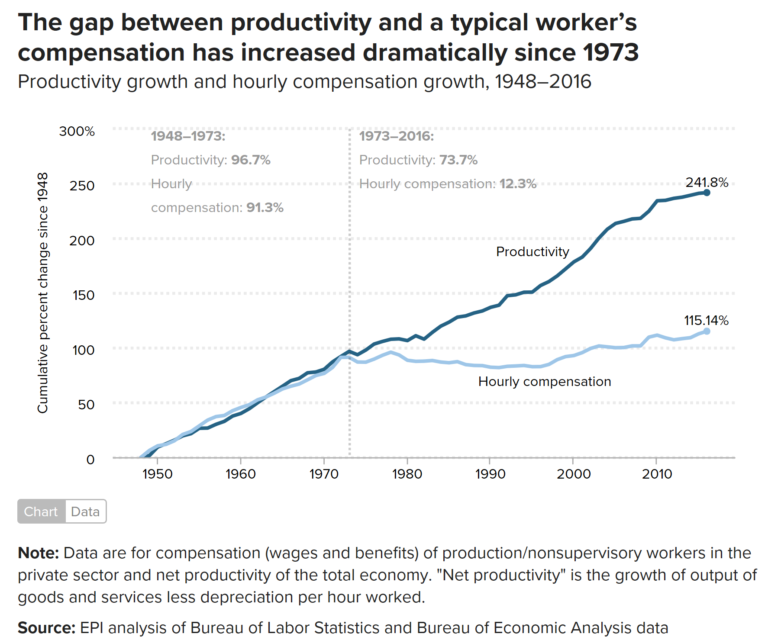Another article from Jared Bernstein Washington Post: There’s an interesting sort of argument going on between Stansbury/Summers (SS) and Mishel/Bivens (MB). My name has been invoked as well, so I’ll weigh in. It’s a “sort-of” argument because there’s less disagreement than first appears. It all revolves around this chart, which plots to the real compensation of mid-wage workers against the growth in productivity. For years they grew together, then they grow apart. The levels of both variables almost double, 1948-73, but since then, productivity has outpaced the real comp of blue-collar, non-managerial workers (mid-wage workers) by a factor of 6. Figure 1 That wedge between productivity and middle-class wage growth has become one of the more important
Topics:
Dan Crawford considers the following as important: Taxes/regulation, US/Global Economics
This could be interesting, too:
Joel Eissenberg writes How Tesla makes money
Angry Bear writes True pricing: effects on competition
Angry Bear writes The paradox of economic competition
Angry Bear writes USMAC Exempts Certain Items Coming out of Mexico and Canada
Another article from Jared Bernstein Washington Post:
There’s an interesting sort of argument going on between Stansbury/Summers (SS) and Mishel/Bivens (MB). My name has been invoked as well, so I’ll weigh in. It’s a “sort-of” argument because there’s less disagreement than first appears.
It all revolves around this chart, which plots to the real compensation of mid-wage workers against the growth in productivity. For years they grew together, then they grow apart. The levels of both variables almost double, 1948-73, but since then, productivity has outpaced the real comp of blue-collar, non-managerial workers (mid-wage workers) by a factor of 6.
That wedge between productivity and middle-class wage growth has become one of the more important developments in political economy, representing the rise of inequality and the disconnect of paychecks and growth. It’s even on a tee-shirt, produced by the group, Fed-Up…

